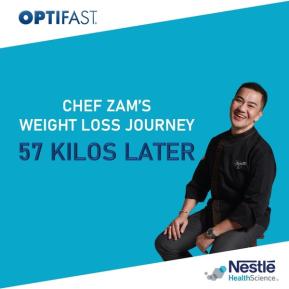Weight Management: Making The Transition
17 Jul 2020

Managing the Transition Stage of Your Diet Plan
The transition period of your diet plan is when you shift from using meal replacements to mostly eating foods from the supermarket, maintaining effective weight management as you reintroduce conventional foods.
The length of time for your transition depends on your diet plan and what feels best for you in order to safely and effectively maintain the weight you’ve lost. How you begin to include more conventional food and what your increased calorie intake should be will be tailored to your individual needs based on factors such as your age, weight and level of physical activity.
Transitioning to the maintenance phase of your diet plan might feel overwhelming and this is completely natural. Though you might be excited about including a greater variety of foods in your diet and looking forward to planning new and diverse meals, you may also feel anxious and concerned about reintroducing food, worrying that you’ll put weight back on. Maybe you’ve enjoyed the convenience of meal replacements and the limited decision-making about what to eat.
Weight management after you’ve finished your plan
However, this transition period is an opportunity for you to change your way of thinking about food and how it fits into your lifestyle. It’s an opportunity for you to get creative with cooking and meal-prep and discover foods that help with weight management and support your long-term goals.
You might experience the following thoughts:
- “What if I lose control and start eating too much like I did in the past?”
- “What if I regain weight when I start adding conventional foods back into my diet?”
These concerns are valid and it’s completely normal to feel nervous.
Remind yourself that you’ve completed your diet plan successfully, and take time to recognise that achievement, using it to help you make healthy choices every time you come to prepare a meal.
In addition, our blog acts as an online support hub for motivation and advice should you start to have any doubts. We understand the concerns that arise after the completion of meal replacement diets. We’re here to help and there’s a whole community of people on a similar journey.
Tips for a smooth diet plan transition
Here are some of our top tips for a smooth transition:
- Delay the inclusion of foods that you crave or that trigger you to overeat
- Replace 2 meals with OPTIFAST products in your daily meal plan initially
- Take away one OPTIFAST product each week and replace with 200-250 calories of other foods
- Plan your meals in advance using your calorie goal for that meal or snack, instead of eating and counting your calories afterwards. Having a predetermined number in mind first prevents overeating
- Plan when you will eat during the day and establish how many calories you will consume each time you eat
- Use a daily food diary to track your food and beverage intake
- Speak to a healthcare professional if you have any concerns about your diet or require any additional support
More from the blog
My weight loss journey 57kg later
Catch Chef Zam as he shares his complete 14-year weight loss journey. ZAMZA... Read more
7 MUST DO steps to kick-start your weight loss journey
Real Goals, Real Change: Start Losing Weight The Scientific Way T... Read more
Creating Supportive Environments On Your Weight Loss Journey
Creating Supportive Environments to Help You Lose Weight In order to stay o... Read more


